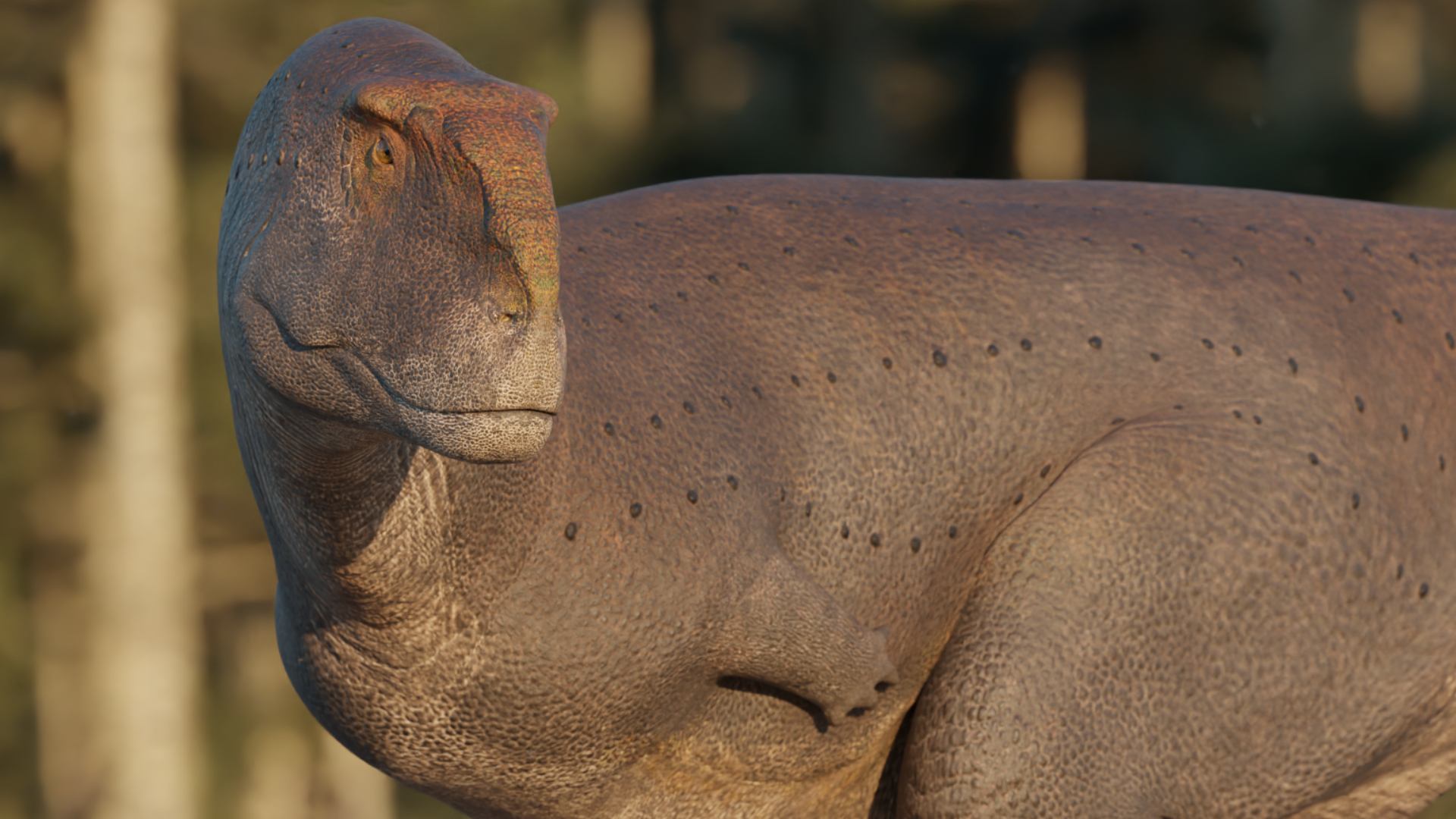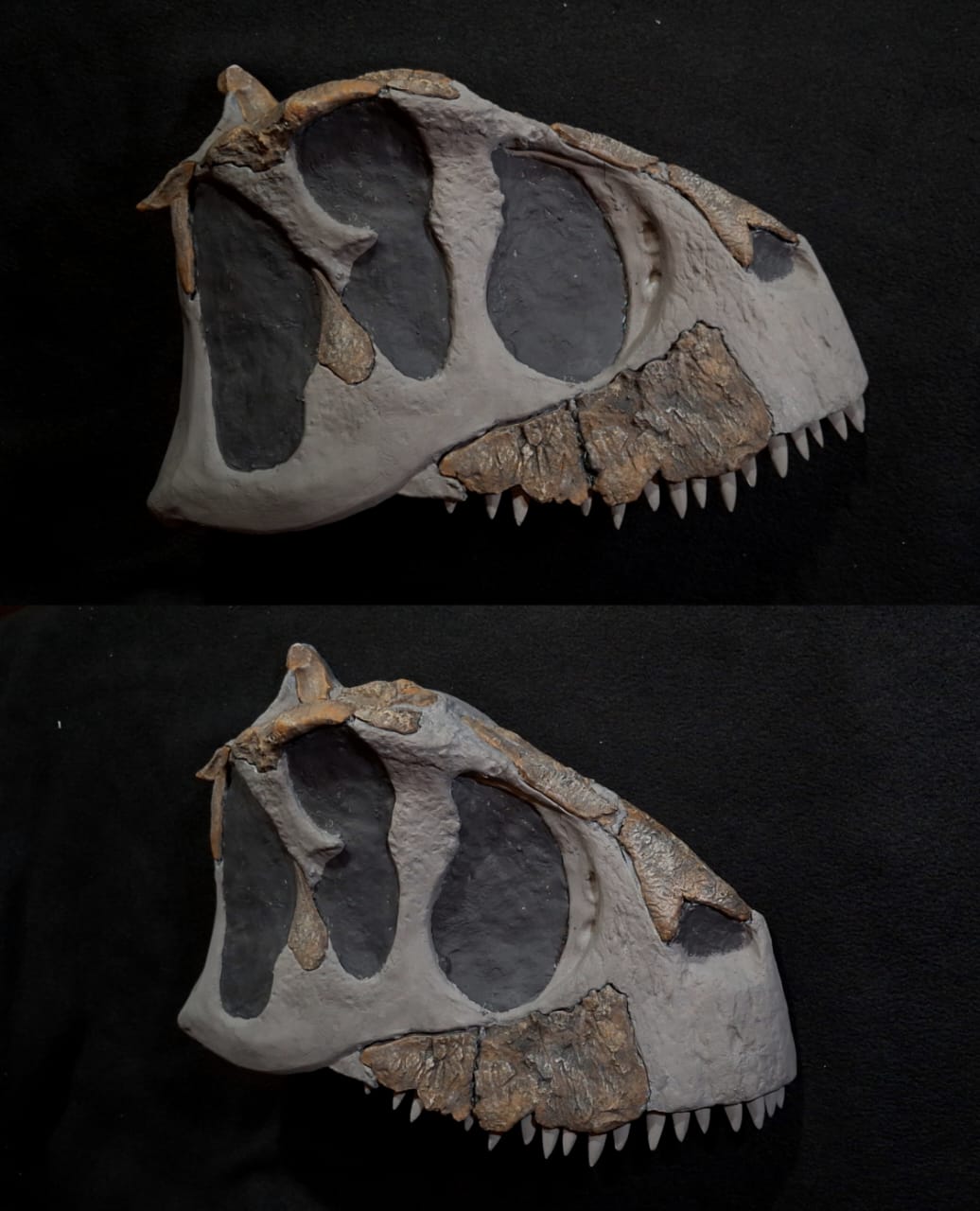If you thought T. rex had tiny arms, wait until you see this apex predator's ridiculously tiny appendages
Newly discovered dinosaur — the apex predator of its environment — had a weirdly flat skull compared to its contemporaries, along with ridiculously small arms.

A newly identified dinosaur had a squished, pug-like face and teeny arms, but that didn't stop it from gobbling up prey during the late Cretaceous, a new study has found.
The 16-foot-long (5 meters) predator, named Koleken inakayal, was one of the top predators in what is now Argentina.
Researchers unearthed K. inakayali fossils in the La Colonia Formation of central Patagonia, according to a study published May 21 in the journal Cladistics. K. inakayali belonged to the Abelisauridae family, which ruled the great southern landmass of Gondwana during the Cretaceous period (145 million to 66 million years ago).
"These guys were the apex predator in that part of the world," study co-author Michael Pittman, a paleontologist at The Chinese University of Hong Kong, told Live Science. "They were occupying the same role that T. rex would have been doing in parts of ancient North America."
Related: Why did T. rex have such tiny arms?
Abelisaurids like K. inakayali had a similar — albeit smaller — body plan to a T. rex — with bulky hind limbs and stunted arms. However, the skull of the new species was much flatter than those of its relatives. "If it was a dog, it would be a pug," Pittman said.
Pittman and his colleagues came across K. inakayali fossils sticking out of the remote Patagonian desert in 2015 and excavated them over several years. The team recovered a partial skeleton of a single individual, which included skull bones, tail bones and near-complete legs, according to a statement released by the National Geographic Society, which helped fund the research.
Sign up for the Live Science daily newsletter now
Get the world’s most fascinating discoveries delivered straight to your inbox.

K. inakayali lived alongside another abelisaurid, Carnotaurus sastrei, which was discovered in the same geological formation in 1985 and is notable for its horns.
K. inakayali lacked horns, one of several features researchers used to distinguish its skeleton from C. sastrei and other abelisaurids. The newfound species was also smaller than C. sastrei, which had a body length of 26 feet (8 m), according to the Natural History Museum in London.
The team determined that K. inakayali belonged in its own group within the Abelisauridae family tree. Its genus name, "Koleken," comes from a word in the Teushen language spoken by the native population of central Patagonia. The original Teushen word, "Kóleken," means "coming from clay and water," which the researchers chose because the fossils were in claystone-dominated rocks from an estuarine environment, according to the study.
The species name, "inakayali," is named after Inakayal, a leader of the Tehuelche native people who fought against the Argentinian military in the 19th century. "He [Inakayal] is known for his resistance against Argentina's Conquest of the Desert military campaign, which resulted in the decimation and displacement of native communities from Patagonia," the authors wrote in the study.
After identifying K. inakayali, the team looked at abelisaurid evolution, and the rate at which their bodies changed over time compared to other dinosaurs. The researchers found that abelisaurids had rapid skull evolution, which likely contributed to their success.
"One of the key ingredients for their success was they very rapidly changed their skull configuration, and that opened up new opportunities for them," Pittman said.

Patrick Pester is the trending news writer at Live Science. His work has appeared on other science websites, such as BBC Science Focus and Scientific American. Patrick retrained as a journalist after spending his early career working in zoos and wildlife conservation. He was awarded the Master's Excellence Scholarship to study at Cardiff University where he completed a master's degree in international journalism. He also has a second master's degree in biodiversity, evolution and conservation in action from Middlesex University London. When he isn't writing news, Patrick investigates the sale of human remains.










